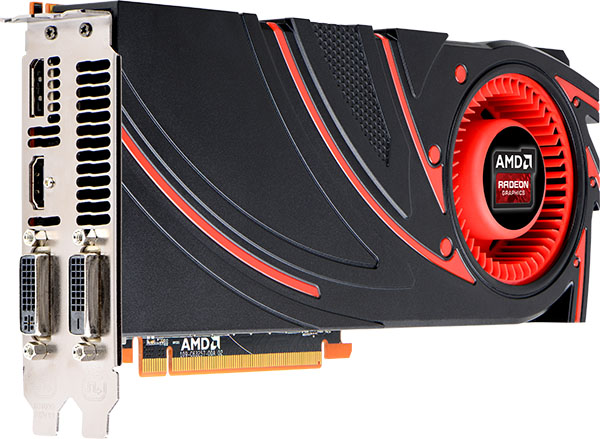Say Hello to AMD's New Generation of Graphics
Are you ready for Hawaii?
The rumors were true, folks. We heard whisperings of an October 8 release/NDA expiration and it looks like those rumors were true. The reviews are here and announcements from graphics cards makers are coming thick and fast. Already we've seen press releases from Asus, MSI, Club 3D, VTX3D, Sapphire, and PowerColor, and that list is only set to grow.
Announced two weeks ago, AMD's Hawaii silicon not brings new cards but a new naming scheme. The company is ditching its old Radeon HD XXXX series naming structure and instead adopting a new one that will focus on 'families' of cards (in this case the R7 and R9) sub-divided into three digit models representing performance levels.
If this sounds a bit familiar, it's because Nvidia did the exact same thing back in 2008. The company revealed plans to simplify its product range so that people who weren't as familiar with its range could better understand what they were buying.
New naming scheme aside, AMD's Hawaii silicon brings the R7 250, R7 260X, R9 270X, R9 280X, R9 290, and R9 290X to market. Today's review covers all but the R9 290 and R9 290X, which, as our own Chris Angelini points out in his review, all employ GPUs already found in the Radeon HD 7000-series line-up.
"Take that R9 270X, for example. With 1280 shaders spread across 20 compute units, it employs the same Pitcairn GPU introduced on the Radeon HD 7870 GHz Edition in March of last year," Chris writes. "Or how about the R9 280X? Its 2048 shaders, 1 GHz engine frequency, and 384-bit memory bus should remind you of the Radeon HD 7970 GHz Edition, sporting the Tahiti GPU."
To read Chris' full review, hit up AMD Radeon R9 280X, R9 270X, And R7 260X: Old GPUs, New Names.
Follow Jane McEntegart @JaneMcEntegart. Follow us @tomshardware, on Facebook and on Google+.
Get Tom's Hardware's best news and in-depth reviews, straight to your inbox.

Jane McEntegart is a writer, editor, and marketing communications professional with 17 years of experience in the technology industry. She has written about a wide range of technology topics, including smartphones, tablets, and game consoles. Her articles have been published in Tom's Guide, Tom's Hardware, MobileSyrup, and Edge Up.
-
Honis "AMD's Hawaii silicon brings the R7 250, R7 260X, R9 270X, R9 280X, R9 290, and R9 290X to market"Reply
It was my understanding that 290s were a new chip and not a refresh like the other 200 series.
From the first paragraph of Chris' review of the lower cards:
"...upcoming Radeon R9 290 and 290X, based on fresh silicon..." -
dxwarlock Why go with more obscure codes, that doesn't fix the problem, it just shuffles the order of the confusing variables around for less techy people.Reply
Go with something that makes sense..why r7 and r9? whats the r for? what does 7 relate to, or 9 for that fact? (People that are tech savvy can figure out what card is what pretty easy, but ask my wife which is better a R7 250, R9 290, and R9 290X and get a blank stare).
Why not codes like B,G and E (budget, gaming, and enthusiast or such)
THEN ask my wife 'which is more powerful, a B250 or a G290" after 5 seconds of telling her what B,G, and E stand for, even she could tell you which is better. -
iamadev Its been almost 2 years since AMD released a new chip. When are we getting a new architecture from this company?Reply
With the slow improvements to their drivers as far as micro stuttering go I think anyone would be mad to buy into AMD GPUs right now.
I have had many ATI GPUs in the past but really this is an incredibly dull launch and we have waited nearly 2 years for this. -
digiex "Say Hello to AMD's New Generation of Graphics" says the title...Reply
then the body says... "AMD's Hawaii silicon not brings new cards but a new naming scheme."
My head ache.
-
beerdette @Honis, it's right what he wrote. He is saying besides the name the announcement of the Hawaii Silicon it brings those new cards(or re-brands to be more accurate).Reply
